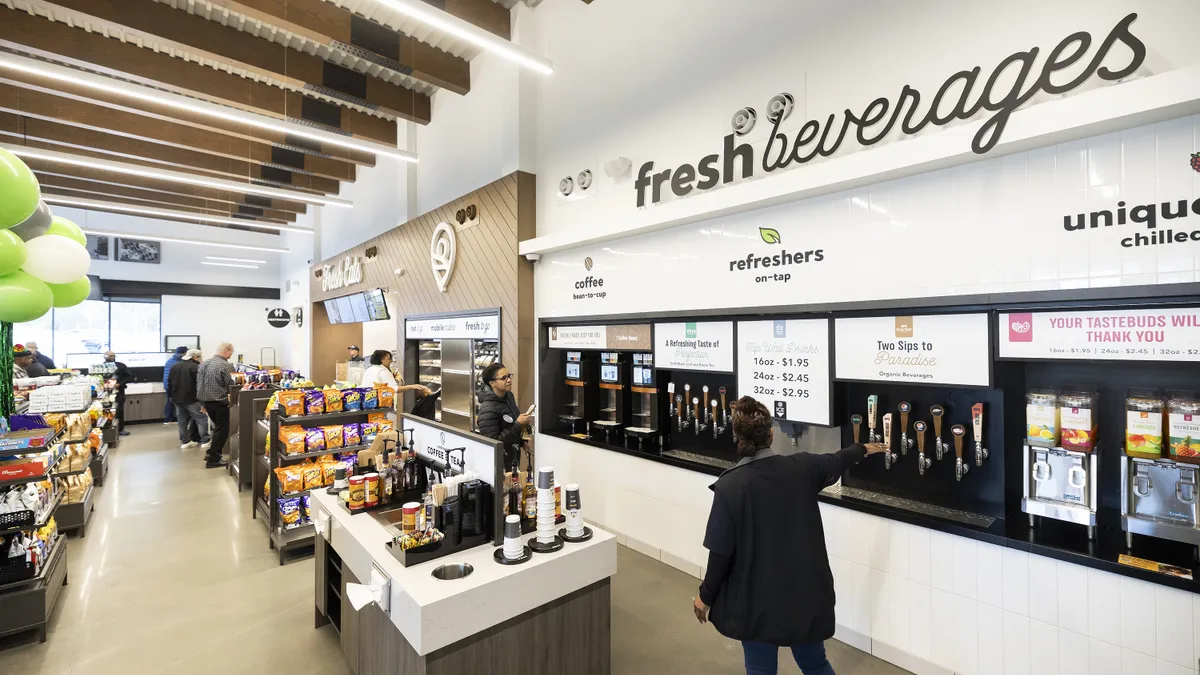Dive Brief:
- Ready-to-drink cocktails were the fastest growing spirits category in both revenue and volume in 2021, according to a report issued by the Distilled Spirits Council of the United States (DISCUS.) It estimated supplier revenue for these cocktails and spirits rose 42.3% to $1.6 billion.
- The data showed 55% of 2,000 adult respondents prefer spirits-based beverages to other RTD choices. The trade group also found 94% of consumers choose RTDs because they offer their preferred flavor choice, 92% because they were convenient and 82% because they taste better than beer.
- RTD cocktails are fueling growth in the alcohol category for convenience stores, with sales increasing more than 62% for the year ending Jan. 15, 2022 per NielsenIQ.
Dive Insight:
The alcoholic category was buoyed for years by the rapid growth of hard seltzers. At least for now, the buzz has shifted to the sudden popularity of RTDs with spirits.
While the report issued by the trade group would expect to show favorable data for alcohols that fall under its purview, the information — based on a consumer survey conducted by Public Opinion Strategies and economic data from DISCUS and IWSR Drinks Market Analysis — provided an especially robust picture.
DISCUS found nearly two-thirds of survey respondents consider themselves to be regular or occasional consumers of RTD beverages, with more than half of respondents preferring a spirits-based beverage to other malt-based or wine-based choices. The primary reasons were flavor/taste and the fact that they are made with real spirits.
“U.S. consumers gravitated toward RTDs as a convenient way to enjoy their favorite cocktail at home during the height of the pandemic, and demand and preference for spirits-based RTDs have continued to grow at a steady rate,” Chris Swonger, president and CEO of DISCUS, said in a statement.
DISCUS noted that while spirit-based RTDs are growing, they still trail those made with malt, the market leader. Access to spirit-based drinks across the U.S. is mixed. Currently, 47 states allow grocery stores to sell malt-based RTDs, but 16 of those ban the sale of similar RTD products that are spirits-based, the trade group said. As their popularity continues to grow, states are looking at whether to expand retail access for spirits-based RTDs to outlets that sell beer and wine.
In Alabama industry groups recently began a push to allow for the sale of spirits-based RTD beverages in grocery and convenience stores, according to CSP Daily News. Pennsylvania’s state senate amended a bill in December 2021 that would allow for the sale of RTD cocktails in retail outlets that already sell malt- and wine-based prepared drinks. It is now referred to the Liquor Control Board. Vermont also scored a victory in June when Gov. Phil Scott signed a law allowing for its sale in convenience stores.
Still, the fact that growth has remained strong even as people have become more comfortable going out and venues once shuttered by the pandemic have opened up speaks to the longevity that RTD spirits and cocktails appear to have.
Unlike hard seltzers that largely distinguish themselves through flavor and convenience, RTD spirits and cocktails go beyond that to include different types of spirits and even nonalcoholic beverages. Together, these beverages have a greater ability to provide consumers with the variety they increasingly covet, while giving the category a potentially longer runway for growth.
Along with market leaders like High Noon, which is made by winemaker E. & J. Gallo, other offerings have or will soon flood the marketplace to capture this growth.
Brown-Forman and Coca‑Cola shared plans to introduce an RTD cocktail combining Jack Daniel’s Tennessee Whiskey and the iconic soda brand; and Beam Suntory, which makes Sauza tequila, rolled out Sauza Agave Cocktails with Boston Beer. And Diageo is partnering with the Vita Coco Company on a line of premium canned cocktails crafted with Captain Morgan rum and Vita Coco coconut water.













